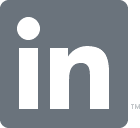General Information
- Authors do not need to be ASE members to participate.
- A non-refundable $35.00 (thirty-five U.S. dollars) processing fee is required for each abstract submitted, payable online only. Purchase orders, checks, and electronic bank transfers will not be accepted. This fee covers administration and online costs associated with the submission, grading, notification, and slotting processes. This fee is non-refundable whether the abstract is accepted for presentation or not. There are no exceptions.
- All expenses (e.g., submission, conference registration, airfare, lodging, etc.) associated with the submission and presentation of an abstract are the responsibility of the presenter.
- Submission of an abstract constitutes a commitment by the author(s) to present if accepted. Failure to register for the meeting and present the accepted work, if not justified, will jeopardize future acceptance of abstracts by ASE.
Eligibility
- Abstracts are not eligible for consideration and/or presentation if the paper has been presented at a U.S. national or international meeting held in North America before the 36th Annual ASE Scientific Sessions.
- Abstracts are not eligible for consideration and/or presentation if the manuscript of the abstract has been published prior to the 36th Annual ASE Scientific Sessions.
- Any human experimentation must conform with the principles of the Declaration of Helsinki of the World Medical Association.
- ASE endorses the position of the American Association for the Advancement of Science (AAAS) in requiring assurances of the responsible use of animals in research. All submissions for consideration must be in compliance with these guidelines (AAAS Resolution: Use of Animals in Research, Testing, and Education).
Abstract Submission Details & Deadlines
- Abstract submission opens late December 2024.
- The EXTENDED submission and editing deadline is 11:59 PM Eastern Time (ET) on Wednesday, March 19, 2025. Abstracts must be submitted in their final form by this deadline to be considered for presentation.
- Notifications of acceptance status will be sent on Friday, May 9, 2025.
- Accepted abstracts of original science will be published exactly as submitted in the September 2025 electronic issues of JASE.
Editing
- Authors must follow all instructions for completing their online submission.
- ASE is not responsible for work that is not submitted by the submission and editing deadline. No new abstracts may be added to the submission system after this date. Proofread abstracts carefully to avoid errors. Additions or deletions of author names are not permitted after the submission and editing deadline. An author may not revise or resubmit an abstract in order to make corrections after this date. Rather, the abstract may be withdrawn or, if accepted, the error may be revised and indicated during presentation.
2025 Arthur E. Weyman Young Investigator’s Award Competition – *Additional Brief Communication Required
- Presenting authors must meet certain eligibility requirements to be considered for the competition. View the eligibility requirements here.
- Investigators must submit an abstract of original work as well as an additional brief communication of up to 1,500 words to be considered for the competition.
- The use of tables and graphics within the additional brief communication is limited to a maximum of 1 graphic and 1 table, or 2 graphics.
Review
- After the submission and editing deadline, all abstracts considered Complete will be forwarded to review.
- Submissions with an Incomplete status after the submission and editing deadline, or those missing payment, will not be considered for presentation.
- Submitted abstracts are peer-reviewed by a panel of graders. Abstract grading is blinded and selections for presentation are based solely on scientific merit.
Abstract Preparation Guidelines
Author Name(s)
- There is no limit to the number of abstracts an author may submit. If an abstract is accepted, the presenter must be one of the co-authors listed.
- An author may present no more than two abstracts. If more than two submissions are accepted from an author, one of his/her co-authors must present any additional abstracts. If an author’s name appears on more than one abstract, it must be identical on each submission.
- Do not list authors by initials only.
Data
- Authors may not submit the same research. Abstracts that appear to be replicate versions of a single study will be rejected.
- Abstracts containing identical or nearly identical data submitted from the same institution and/or individuals will be rejected.
Format
- Abstracts of original science – Content should be structured into the following four (4) sections
-
- Background:
-
- Methods:
-
- Results:
-
- Conclusions:
- Clinical cases – Content should be structured into the following four (4) sections:
-
- Clinical Presentation:
-
- Imaging Findings:
-
- Role of Imaging in Patient Care:
-
- Summary/Discussion Points:
Content
-
- Character limit – Abstracts are limited to 2,250 characters. This includes the text but not the title or authors. Punctuation counts as a character, but spaces do not. The submission site will automatically calculate an abstract’s characters and will notify the author if the submission exceeds the maximum character limit.
-
- Tables/Graphics – The use of high-quality tables and graphics are encouraged if they are relevant to the research submitted. Each abstract may include up to (3) graphics and/or tables. The submission site supports both .gif and .jpg graphic formats. Addition of a table deducts 250 characters no matter how many characters the table itself contains; addition of a graphic also deducts 250 characters.
-
- Abbreviations – A maximum of five (5) unique abbreviations is allowed within the body of the abstract. No abbreviations should appear in the title. Place abbreviations in parentheses after the full word or phrase the first time it appears. Abbreviations increase the difficulty of reading and evaluating abstracts, which will be considered in the review process.
-
- Clarity of expression will be considered in the review process. The overall quality of language used should assure comprehension by the reader.
-
- Do not include:
-
-
- References, key words, credits, or grant support in your submission.
-
-
-
- Names or personal information of any patient participating in the study or trial. If you do, the abstract will not be considered for presentation.
-
-
-
- Authors or institutions in the title.
-
-
- Title format: lowercase linking words in the title, unless used at the beginning of the title or after a colon. Bold the title and do not put a period at the end.
-
-
- Examples of linking words: a, an, and, as, at, but, by, for, in, is, of, on, or, the, to, via
-
-
-
- Examples of proper title format:
This is a Properly Formatted Abstract Title
The Abstract: An Example of Proper Title Format
- Examples of proper title format:
-
-
- Proofread abstracts carefully to avoid errors and ensure compliance with ASE’s style preferences. ASE will never edit the scientific content of a submission. Nor will it make changes to a submission, including typographical errors, except to comply with the grammatical format preferences as described above. If accepted for presentation, abstracts of original science will be published in the September 2025 electronic issue of JASE exactly as submitted.
Publication & Presentation of Accepted Abstracts
Abstract Publication
- Full text of accepted abstracts of original science will be published as submitted in the September 2025 electronic issue of JASE. Publication of tables and/or graphics will be in color if submitted that way.
- Clinical cases accepted for presentation are not published.
Embargo Policy
- The submitting author acts on behalf of all co-authors and in submitting an abstract for consideration, agrees that if accepted the work is embargoed for release until date and time of presentation at the 36th Annual ASE Scientific Sessions. Information may not be released before then. Failure to honor the embargo policy will result in the abstract being withdrawn and barred from presentation.
Presentation
- All abstracts presented at the 36th Annual ASE Scientific Sessions must conform to the eligibility criteria listed above.
- The 2025 ASE Abstract Chairs will determine presentation time and format for all accepted work, based on the topic and relationship to others submitted.
- All presentations and question-and-answer periods will be in English. If presenters need assistance in understanding or responding to questions in English, they are encouraged to have a member of their research group assist them.
- Each presenting author is required to comply with the ASE Disclosure Policy and is expected to disclose to the audience any real or apparent conflict(s) of interest that may have a direct bearing on the subject matter of the continuing medical education activity. This pertains to relationships with pharmaceutical companies, biomedical device manufacturers, or other corporations whose products or services are related to the subject matter of the presentation topic.
- Presenters are required to make disclosure of any financial interest/arrangement or affiliation with any organization(s) that could be perceived as a real or apparent conflict of interest in the context of their presentation subject matter. Disclosure information collected during the submission process will be published in ASE’s final program materials. To be in compliance with this policy, oral presenters must disclose at the beginning of their presentation. Poster presenters must include disclosure information on their posted presentation materials.
- Any additional or revised guidelines for abstract presentation will be provided to presenting authors of accepted abstracts in their notification email.
Copyright
- The submitter acts on behalf of all co-authors and in submitting an abstract, transfers to ASE the copyright and all other rights in the material comprising the abstract if the abstract is accepted. Co-authors reserve the following: All proprietary rights other than copyright, such as patent rights; and the right to use all or part of the abstract in future works of their own.
- ASE, as holder of the copyright of the accepted abstract, reserves all rights of reproduction, distribution, performance, display, and the right to create derivative works in both print and digital formats.
Disclosure
- All abstracts submitted are disclosed to members of the peer-review selection committee, as well as to ASE employees and contractors as necessary in connection with the Scientific Sessions. Those abstracts that are accepted for presentation are made available to the public in advance of the Scientific Sessions. The usual procedures for publishing abstracts are described above under “Publication.” Abstracts not accepted for presentation are not published, and are ordinarily not disclosed outside of ASE and persons associated with the selection process (i.e., the peer-review committee). Notwithstanding these policies and procedures, ASE is not subject to any confidentiality requirements with respect to submitted abstracts. In addition, compliance with any disclosure or nondisclosure requirements that apply to researchers or research sponsors (whether under federal securities laws, contract agreement, or otherwise) is the sole responsibility of the researcher and/or sponsor, and not ASE.
Abstract Withdrawal
- Abstract withdrawal requests should be emailed to [email protected]. Include your abstract control number, title and the presenting author’s name in your email.
Questions?
View our Guidelines for Abstract Preparation and Submission or visit our FAQ page. Please email any withdrawal requests to [email protected].





